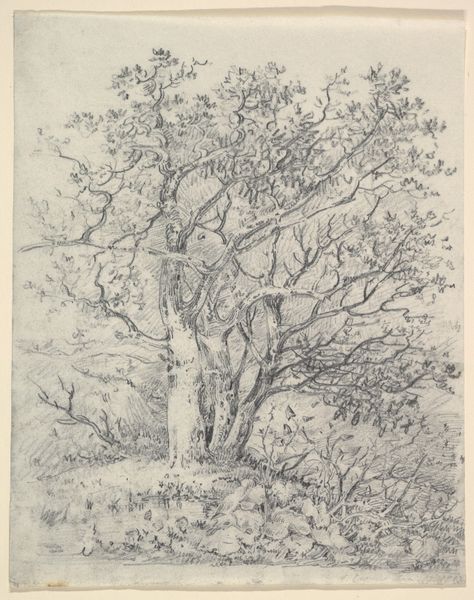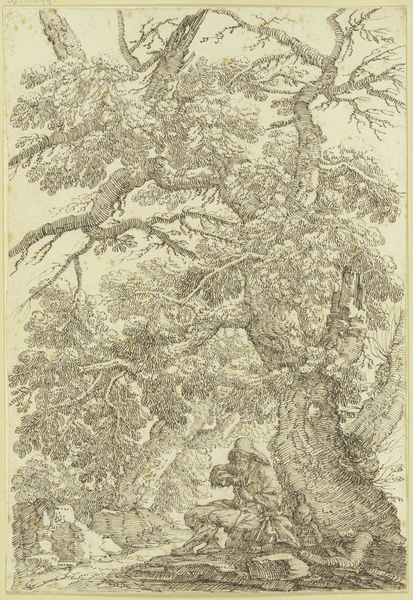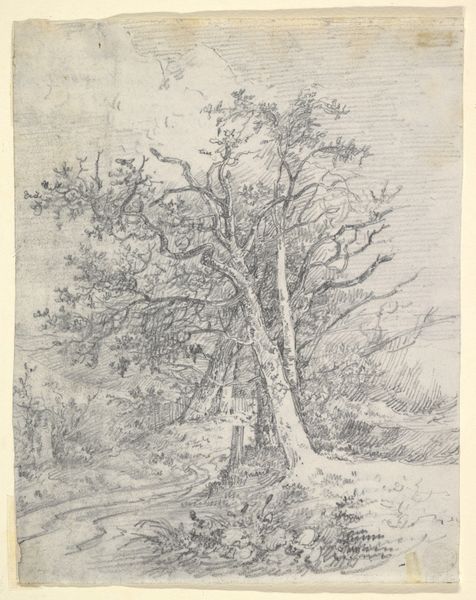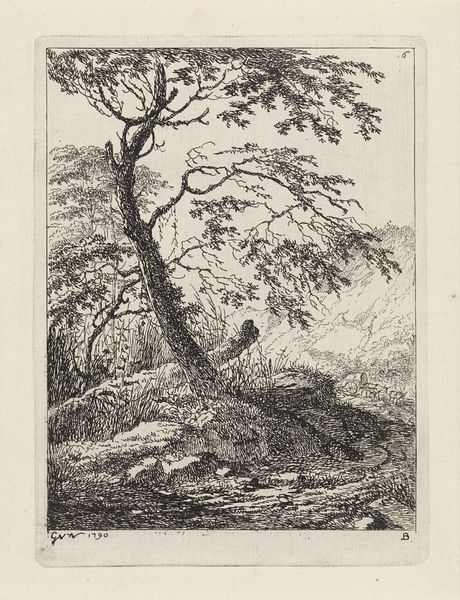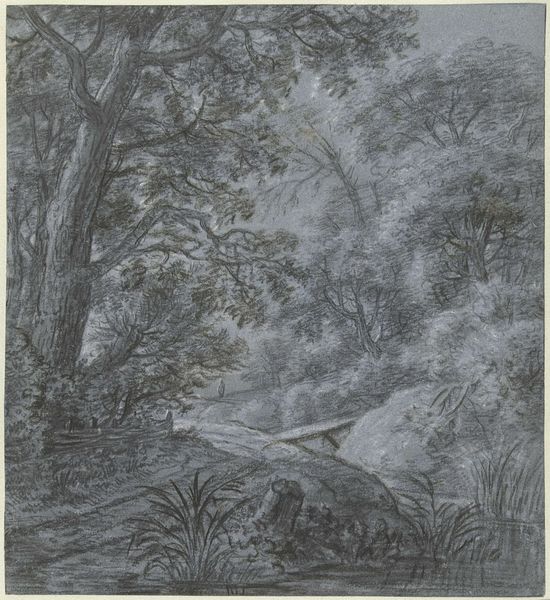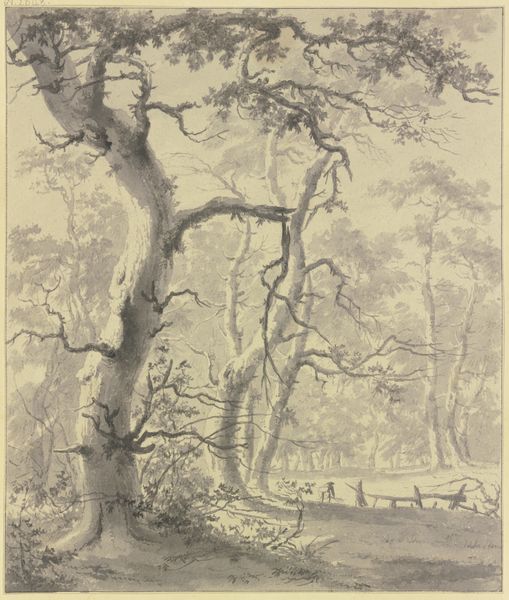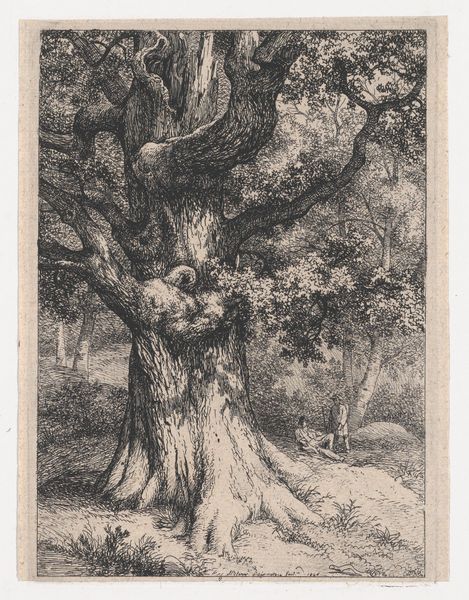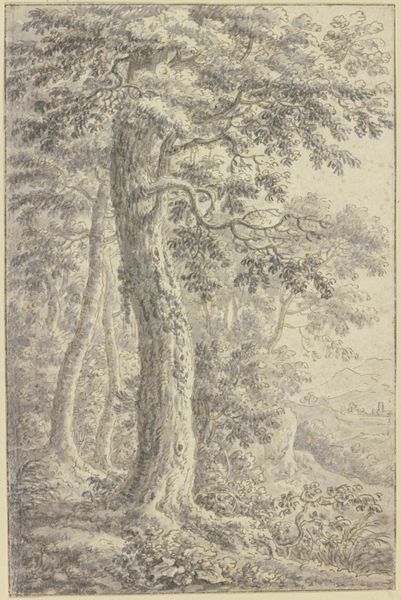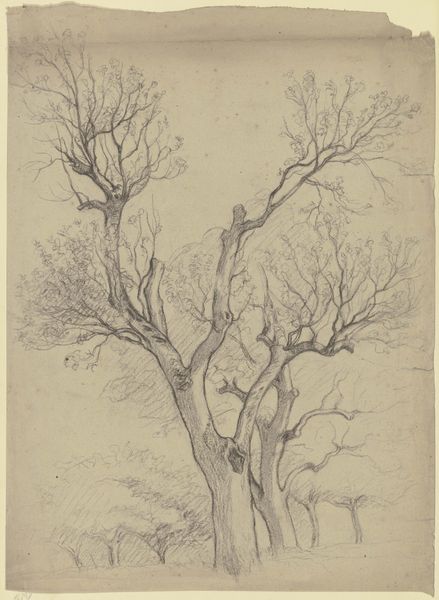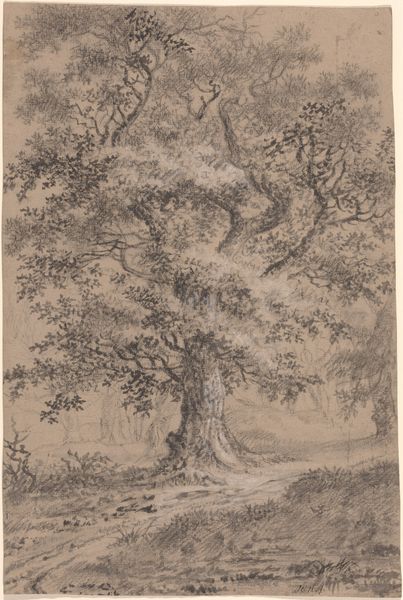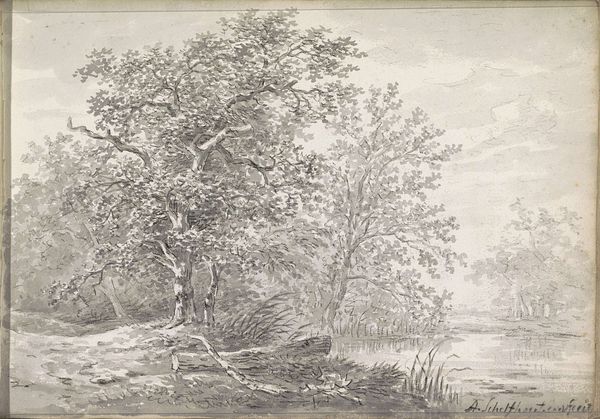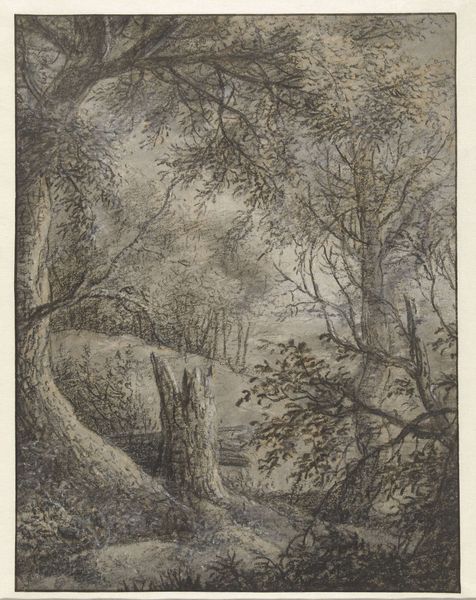
#
tree
#
natural stone pattern
#
rippled sketch texture
#
natural shape and form
#
possibly oil pastel
#
carved into stone
#
forest
#
watercolour bleed
#
natural texture
#
natural palette
#
organic texture
#
watercolor
Dimensions: height 292 mm, width 235 mm
Copyright: Rijks Museum: Open Domain
Curator: This is Simon de Vlieger's "Old Tree on a Hillside," estimated to have been created sometime between 1610 and 1653. Editor: Immediately, I’m struck by its melancholic stillness. The stark contrast, the lonely tree... it feels almost like a visual poem about resilience in the face of stark adversity, you know? The raw emotion in it just kind of sucks you in. Curator: Vlieger, though often overlooked in comparison to his contemporaries, was crucial in popularizing seascape and landscape paintings in Dutch Golden Age art. He frequently sketched outdoors. Notice the directness of the lines; they reflect his effort to authentically render scenes from nature. This was part of a larger cultural trend, actually. Editor: Nature as a subject – grounding! I imagine Vlieger, out in some field, charcoal in hand, battling the wind to capture this gnarly old tree, yeah? He probably felt the same things we feel now when looking at it! A certain… something sacred about those old natural formations. It is incredible what that piece, which may well be watercolor, manages to make me feel. Curator: The rising mercantile class of the 17th century desired tangible records of their surroundings. Paintings, especially landscapes, affirmed their connection to the land and symbolized burgeoning national pride. His compositions weren't mere reproductions; they conveyed a specific idea about the human-nature relationship. Editor: It's almost as if the tree is reaching, struggling to break free of the earth and the weight of existence. Simultaneously strong and desperately reaching for survival... A kind of stoic determination there; beautifully heartbreaking. I imagine it as some kind of metaphor for human striving or just old age. What do you make of that somber tone? Was it intentional, do you reckon? Curator: Given the historical context, with the Eighty Years' War recently concluded, artists were very keen on visually establishing Dutch territories. While I cannot know with certainty that this symbolism was intended, I find it hard to look past this as a distinct possibility when considering this era's social and political motivations. Editor: Maybe… Maybe. Even without intentional metaphors, I think the universal pull is undeniable, wouldn't you agree? Whatever Vlieger was thinking, this tree still speaks volumes, and across centuries no less. A very special tree, that. Curator: Absolutely, the enduring power of images lies partly in their ambiguity, prompting continuous re-interpretation and resonance across time and cultural contexts. Thank you. Editor: For sure. Now I must wander back to my studio; time to chase some stubborn muses and old trees.
Comments
No comments
Be the first to comment and join the conversation on the ultimate creative platform.

